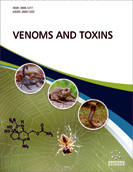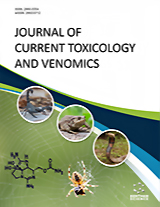Abstract
Background: Natural products are characterized by a complex chemical composition and are capable of concurrently modulate several signalling pathways. Considering the biological complexity of carcinogenesis, natural products represent key components of the therapeutic armamentarium for oncological diseases. The bark of Terminalia arjuna is used in traditional Ayurvedic medicine for its astringent, expectorant, cardiotonic, styptic, and antidysenteric properties. Alongside its traditional uses, Terminalia arjuna exhibits different biological activities including antimutagenic and anticarcinogenic.
Objective: This study was designed to evaluate the toxic effects of an alcoholic extract obtained from the bark of T. arjuna on a human T-lymphoblastic cell line (Jurkat). We explored the phytochemical composition and investigated the cytotoxic, cytostatic, genotoxic, and anti-genotoxic effects. Methods: The phytochemical composition was analyzed using spectrophotometric methods; all the biological endpoints were assessed through flow cytometry. Results: The phytochemical screening showed that polyphenols represent about 64% of the extract. Moreover, the extract was cytotoxic on Jurkat cells by inducing both apoptosis and necrosis, and blocked the cell cycle in the G2/M phase. Additionally, it was found that the extract lacks any genotoxic effect, but was not effective in protecting Jurkat cells from the DNA damage induced by H2O2 and etoposide. Conclusion: The results of our study show the toxic effects of Terminalia arjuna on Jurkat cells and confirm the pivotal role played by natural compounds in the oncological field. Further studies should be performed to better understand its clinical potential and deepen its toxicological profile.Keywords: Terminalia arjuna, leukemia cells, cytotoxicity, cell cycle, genotoxicity, antigenotoxicity.
Graphical Abstract
[http://dx.doi.org/10.3390/medicina55090526]
[http://dx.doi.org/10.1186/s40169-017-0181-2] [PMID: 29340951]
[http://dx.doi.org/10.1016/S1470-2045(18)30136-0] [PMID: 29508748]
[http://dx.doi.org/10.1016/j.phrs.2009.01.017] [PMID: 19429468]
[http://dx.doi.org/10.1021/acs.jnatprod.5b01055] [PMID: 26852623]
[http://dx.doi.org/10.3390/ijms20184536] [PMID: 31540249]
[http://dx.doi.org/10.3390/toxins10110469] [PMID: 30441778]
[http://dx.doi.org/10.1016/j.ejphar.2019.172472] [PMID: 31228447]
[http://dx.doi.org/10.1038/s41598-019-43609-5] [PMID: 31076590]
[http://dx.doi.org/10.18632/oncotarget.25325] [PMID: 29849952]
[http://dx.doi.org/10.1517/17425255.2014.972933] [PMID: 25339439]
[PMID: 29009552]
[http://dx.doi.org/10.1080/14786419.2011.561206] [PMID: 22017259]
[http://dx.doi.org/10.4103/2225-4110.139103] [PMID: 25379463]
[http://dx.doi.org/10.1007/s11101-009-9134-8]
[PMID: 22392241]
[http://dx.doi.org/10.1016/S2221-1691(13)60186-0] [PMID: 24093787]
[http://dx.doi.org/10.1016/S0166-3542(02)00077-3] [PMID: 12206882]
[PMID: 21614892]
[http://dx.doi.org/10.1016/S0378-8741(01)00183-0] [PMID: 11297851]
[http://dx.doi.org/10.1007/s12012-010-9099-2] [PMID: 21116736]
[http://dx.doi.org/10.1007/s11010-006-0433-8] [PMID: 16328960]
[http://dx.doi.org/10.1089/jmf.2007.0130] [PMID: 19053867]
[http://dx.doi.org/10.1007/s11033-008-9279-3] [PMID: 18537039]
[http://dx.doi.org/10.1002/ptr.2428] [PMID: 18729254]
[http://dx.doi.org/10.1615/JEnvironPatholToxicolOncol.v20.i1.20] [PMID: 11215710]
[http://dx.doi.org/10.1055/s-2007-990258] [PMID: 18008199]
[http://dx.doi.org/10.1016/j.ejmhg.2013.10.004]
[http://dx.doi.org/10.1016/S1995-7645(11)60010-2]
[PMID: 15281223]
[http://dx.doi.org/10.1080/14786419.2014.1003299] [PMID: 25612143]
[http://dx.doi.org/10.1016/S0031-9422(00)94533-3]
[http://dx.doi.org/10.1016/j.mrgentox.2007.03.002] [PMID: 17434794]
[http://dx.doi.org/10.2174/156800908786241050] [PMID: 18991571]
[http://dx.doi.org/10.1038/s41598-018-21478-8] [PMID: 29463813]
[http://dx.doi.org/10.1093/carcin/bgy034] [PMID: 29684110]
[http://dx.doi.org/10.1016/j.biopha.2019.108999] [PMID: 31146109]
[http://dx.doi.org/10.4103/0250-474X.107067] [PMID: 23626389]
[http://dx.doi.org/10.1007/s00204-015-1570-1] [PMID: 26223318]
[http://dx.doi.org/10.2174/1570163812666150602144310] [PMID: 26033233]
[http://dx.doi.org/10.1038/cdd.2012.93] [PMID: 22858544]
[http://dx.doi.org/10.1007/978-1-61779-108-6_8] [PMID: 21468968]
[http://dx.doi.org/10.1101/cshperspect.a006080] [PMID: 26626938]
[http://dx.doi.org/10.1038/s41418-017-0012-4] [PMID: 29362479]
[http://dx.doi.org/10.1002/cbin.11137] [PMID: 30958602]
[http://dx.doi.org/10.1242/jcs.093575] [PMID: 24833670]
[http://dx.doi.org/10.2174/156652408783769571] [PMID: 18336292]
[http://dx.doi.org/10.1073/pnas.97.26.14766] [PMID: 11121076]
[http://dx.doi.org/10.1007/BF03402120] [PMID: 10448645]
[http://dx.doi.org/10.1074/jbc.M100730200] [PMID: 11279125]
[http://dx.doi.org/10.1074/jbc.M302967200] [PMID: 12816951]
[http://dx.doi.org/10.1290/1071-2690(2000)036<0544:GSOHTC>2.0.CO;2] [PMID: 11149755]
[http://dx.doi.org/10.3748/wjg.v12.i7.1018] [PMID: 16534840]
[http://dx.doi.org/10.1097/00001813-200504000-00007] [PMID: 15746577]
[http://dx.doi.org/10.1055/s-2005-837823] [PMID: 15770544]
[http://dx.doi.org/10.1055/s-0032-1315040] [PMID: 22814889]
[http://dx.doi.org/10.1002/ptr.5563] [PMID: 26787261]
[http://dx.doi.org/10.1016/j.biopha.2016.04.046] [PMID: 27470335]
[http://dx.doi.org/10.1038/nrd1609] [PMID: 15688074]
[http://dx.doi.org/10.1158/0008-5472.CAN-17-2782] [PMID: 29311160]
[http://dx.doi.org/10.1038/nrc2602] [PMID: 19238148]
[http://dx.doi.org/10.1016/j.tiv.2012.11.001] [PMID: 23147639]
[http://dx.doi.org/10.1038/35106065] [PMID: 11902577]
[http://dx.doi.org/10.1038/nature03094] [PMID: 15549091]
[http://dx.doi.org/10.1016/j.canlet.2018.10.005] [PMID: 30312726]
[http://dx.doi.org/10.1016/j.biopha.2015.04.004] [PMID: 26054678]
[http://dx.doi.org/10.4067/S0716-97602000000200004] [PMID: 15693271]
[http://dx.doi.org/10.3390/nu8090552] [PMID: 27618095]
[http://dx.doi.org/10.1002/ptr.6403] [PMID: 31373113]
[PMID: 17551696]
[http://dx.doi.org/10.1002/prp2.294] [PMID: 28596842]
[http://dx.doi.org/10.1007/s003940050054] [PMID: 10443335]
[http://dx.doi.org/10.1016/j.semcancer.2017.08.005] [PMID: 28830771]
[http://dx.doi.org/10.3390/nu8090529] [PMID: 27589790]
[http://dx.doi.org/10.3892/or.2016.5150] [PMID: 27748855]
[http://dx.doi.org/10.1016/j.tiv.2017.06.004] [PMID: 28595835]
[http://dx.doi.org/10.1016/j.jnutbio.2004.09.004] [PMID: 15629234]
[http://dx.doi.org/10.1016/j.biopha.2016.09.049] [PMID: 27668533]
[http://dx.doi.org/10.1002/mnfr.201500407] [PMID: 26250940]
[http://dx.doi.org/10.2174/1570161115666170713094319] [PMID: 28707601]
[http://dx.doi.org/10.1016/j.dnarep.2019.102679] [PMID: 31450085]
[http://dx.doi.org/10.3390/nu8120785] [PMID: 27918471]
[http://dx.doi.org/10.1016/S0921-8777(01)00066-0] [PMID: 11585363]
[http://dx.doi.org/10.1016/S0027-5107(01)00073-2] [PMID: 11295156]
[http://dx.doi.org/10.3402/ljm.v5i0.4637] [PMID: 21483593]
[http://dx.doi.org/10.1007/s10495-012-0740-3] [PMID: 22684843]
[http://dx.doi.org/10.2174/0929867043364531] [PMID: 15379707]
[http://dx.doi.org/10.1016/S0278-6915(00)00104-6] [PMID: 11033200]
[http://dx.doi.org/10.1615/JEnvironPatholToxicolOncol.v21.i1.20] [PMID: 11934011]
[http://dx.doi.org/10.5487/TR.2018.34.4.281] [PMID: 30370002]
[http://dx.doi.org/10.1016/S0828-282X(10)71055-2]
[http://dx.doi.org/10.1097/ICU.0b013e32834922d2] [PMID: 21730848]
[http://dx.doi.org/10.1038/nn.2947] [PMID: 22030550]
 10
10 1
1




